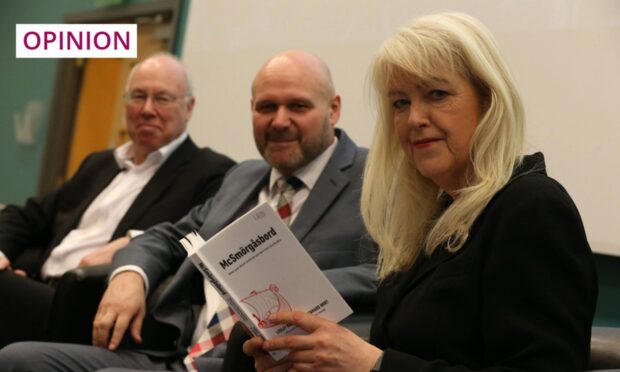Almost daily across every news organisation, often well below the main headlines, you are likely to come across details of the latest cyberattack.
Terms like “ransomware” and “data breach” are used to describe the often catastrophic impact on the target.
While cyberattacks may seem like something that only happens to large enterprises, it can impact a whole range of businesses, public bodies, education providers, charities and individuals.
Across the globe, there is a continued rise in online criminality and general security concerns. These have become particularly prominent during the pandemic.
Over the last 18 months, organisations have adapted to the “new normal” of working from home and there has been a growing reliance on the internet to provide services or carry out business.
Many companies are rapidly undergoing a digital transformation to adapt to this new way of working. This rapid move online can expose them to vulnerabilities or attacks, especially if cyber security aspects are not considered.
Cyberattacks we hear about are just the tip of the iceberg
The attacks and breaches that we do hear about are just the tip of the iceberg, belying a secret digital war constantly being waged between organisations and a range of anonymous attackers.
Due to the desire for secrecy among both victims and perpetrators, it is hard to know the true scale of cybercrime
Most attacks remain unpublicised for security and reputational reasons. While UK Government figures indicate that one in 10 companies have experienced some form of attack in the last 12 months, even these statistics could be underestimating the problem. Due to the desire for secrecy among both victims and perpetrators, it is hard to know the true scale of cybercrime.
We do know, however, that it is becoming more prevalent. There has been significant rise in ransomware-type attacks in the last few years.
Ransomware is sophisticated computer code that prevents users, or an entire organisation, from accessing their systems or data and demands a payment for access. Often the ransomware collects sensitive data and directs this back to the perpetrators as leverage in blackmail. The impact on the groups targeted is enormous.
Criminals target digital weakness
This month, a cyberattack on a US fuel pipeline company Colonial Pipeline caused a reduction in oil supply across America’s east coast. The drop in supply caused a rise in consumer petrol pump prices, sparking a crisis during a period of economic recovery.
Last week, the Irish health service (HSE) suffered a digital attack, described as the most significant in the state’s history. It resulted in cancellations of appointments and outpatient services.
A cyberattack target won’t have actually been selected by anyone – at least not anyone human
Closer to home, Scotland’s Environmental Protection Agency suffered a similar ransomware attack in December. It affected a range of systems and shut critical operations for a considerable time.
The thing about these attacks is that the target won’t have actually been selected by anyone – at least not anyone human. In the vast majority of cases, the attacks are the result of a vulnerability in a piece of software, a network or information security policy.
Let’s get ahead of attacks
One of the factors that make cybercriminal groups so dangerous and successful is their ability to adapt and grow. Cybercriminals and the tools they use are adept at finding new vulnerabilities to exploit. This underscores the importance of being able to foresee and anticipate potential threats and strengthen an organisation’s cyber defence.
Often cyber security experts are brought into a company after an attack or breach has happened. This is important, as it does provide a picture of what has happened and help identify the vulnerability.
Wouldn’t it be better, though, if the organisation was protected in the first place?
We need more cyber security experts
To do this, companies need access to staff with key skills and training in cyber security. However, there is a gap in the demand and supply of people with these skills across Scotland. Encouraging young people into cyber security roles, creating apprenticeships and upskilling for existing staff is vital.
RGU’s new Graduate Apprenticeship course in cyber security provides students with the skills required to become competent in this growing, fast-paced sector.
Our cyber security Masters course was recently accredited by the National Cyber Security Centre – a part of the UK Government Communications Headquarters (GCHQ). GCHQ themselves have highlighted the importance of taking a national approach to cybersecurity, calling it “an increasingly strategic issue”.
All organisations must embed highly trained and skilled cybersecurity experts within their workforce, not only to protect their IT infrastructure but also for the sake of their reputation and finances.
Dr John Isaacs is Head of the School of Computing at Robert Gordon University












